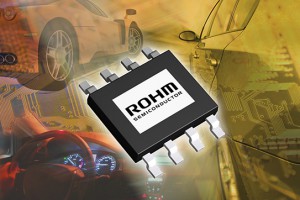XMOS is chasing automotive business by qualifying its multi-core microcontrollers to AEC-Q100. “The xCORE architecture is a fit for many applications in the automotive space, from infotainment and driver assistance to powertrain control,” said Dr Paul Neil, v-p of product management at the firm. “Completing AEC-Q100 qualification is a key step for us.” The architecture “lends itself to modular redundancy ...
Automotive Electronics
News articles relevant for automotive content, whether in terms of components, power, communications, infotainment or testing.
Getting market intelligence on electric vehicles
IDTechEx has launched a new browser-based “Electric Vehicle Market Intelligence Portal” providing analysis of the total electric vehicles market for land, water and air. Electric vehicle companies across the value chain are profiled, analysed and benchmarked using the IDTechEx Index. There are also articles offering latest research providing distilled updates, insights, analysis as well as detailed market data and forecasts on ...
Hall effect current sensor aims at electric vehicles
Melexis has released a fast Hall-effect current sensor for electric vehicles, hybrid vehicles, and solar generation. Response time is 3µs, for dc and ac measurements up to 200kHz, and transfer characteristics are adjustable for sensitivity, gain and offset through control parameters stored on the built-in EEPROM. There are two versions: MLX91208CAL for low magnetic fields (100-700mV/mT) and MLX91208CAH for medium ...
Double-sided contact simplifes switch design in electric vehicles
ALPS Electric has developed a surface mount two-pole sliding contact micro switch specifically for use in electric vehicle parking brakes (EPB). Typically the design of EPBs has used two micro switches, but this has led to problems such as the on/off timing of the switches going out of sync during low-speed operation. The SPVQC micro switches use a double-sided sliding ...
EnSilica launches automotive radar IP
EnSilica has launched a Constant False Alarm Rate (CFAR) soft IP core for use in situational awareness radar sensors for automotive driver-assist applications.
Future electric vehicles will use GaN and SiC, says supplier
GaN Systems is presenting a paper on new wide-bandgap semiconductors and their role in automotive power electronics at the Electric & Hybrid Vehicle Conference & Expo in Michigan 17 – 19 September. With manufacturers are currently designing vehicles to be launched onto the market in 2018, it is predicted that by this date gallium nitride semiconductors will attain price parity ...
Automotive motor controller has 16bit CPU and LIN
Melexis has announced a motor controller IC for dc and single or dual phase brush-less dc motors in vehicles. Intended for environments with elevated temperature levels, MLX81150 has a 16bit embedded microcontroller with 32kbyte flash to deal with specific motor control applications, plus a 4bit CPU to take care of the LIN protocol. http://www.melexis.com/DC-Motor-Control-ICs/General/MLX81150-710.aspx Also on board are: a voltage ...
Chip protects mains outputs from electric vehicles
Mains not only flows into electric cars for charging. Some electric or hybrid vehicles include inverters to allow the mains equipment to be powered by the vehicle battery, including for use when the owners house has a power cut. To protect the users of such mains outputs, Rohm is offering an automotive grade chip for built-in RCDs (residual current devices) ...
IP67 connectors are tough for industry and vehicles
Molex has introduced an industrial connector family that exceed IP67 and can be submerged in various fluids. Called MX150L, it “supports low-level signals as well as power applications up to 40A”, said the firm. “Customers can choose from wire-to-wire, wire-to-panel and wire-to-board configurations and a wide range of wire styles and insulation thicknesses.” Applications are expected in commercial vehicles, marine ...
Electronics patent of the month: Improving battery modules for hybrid vehicles
One of the 'quiet' technological revolutions of the past ten to twenty years has been in relation to the efficiency and performance of batteries. As our world has become increasingly mobile, we rely on compact and effective portable power supplies to achieve best performance from our cameras, laptop computers, tablets, mobile phones and more recently, cars.
 Electronics Weekly Electronics Design & Components Tech News
Electronics Weekly Electronics Design & Components Tech News


